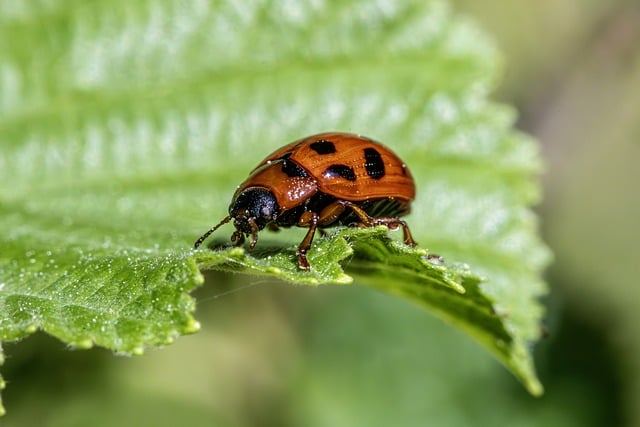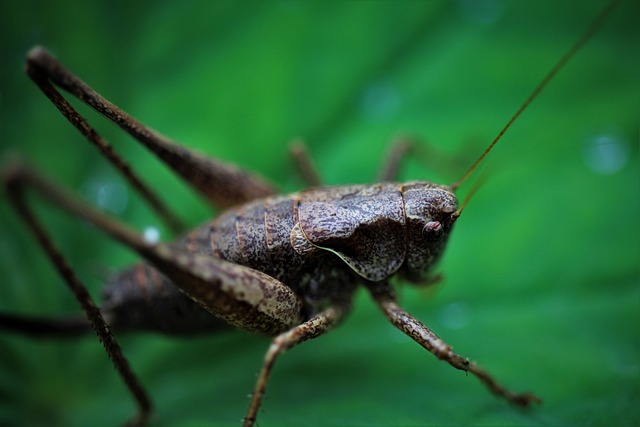Eco-friendly pest control offers a sustainable, balanced approach that prioritizes environmental safety while ensuring effective pest management. Leveraging natural solutions like biological control, plant-based repellents, and improved sanitation preserves biodiversity and maintains ecological balance. Driven by consumer demand for sustainability, this method is a responsible alternative to chemical-heavy traditional methods. Benefits include reduced toxic chemical use, cost-effectiveness, and long-term environmental protection. Certified eco-friendly providers ensure safety standards, while consumer awareness drives innovation in greener solutions. Simple tips like hygiene, sealing entry points, and natural repellents complement these efforts.
In today’s eco-conscious world, consumers are increasingly seeking eco-friendly pest control solutions that balance effective extermination with environmental preservation. This article delves into the green approach of understanding and adopting eco-friendly pest control methods. We explore benefits like reduced chemical exposure and ecological impact, while dissecting common pests and their natural enemies. Learn about organic techniques, the role of plants and essential oils, and navigate challenges in this growing industry. Additionally, we discuss regulatory frameworks, consumer awareness, and tips for sustainable pest management.
Understanding Eco-Friendly Pest Control: A Green Approach

Eco-friendly pest control is a approach that prioritizes minimizing environmental impact while effectively managing pests. Instead of relying heavily on synthetic chemicals, this method leverages natural solutions and eco-conscious practices. By understanding the ecology of both pests and their predators, it aims to create a balanced ecosystem where pests are controlled without harming beneficial insects, birds, or other wildlife.
This green approach often involves strategies like biological control (introducing natural predators), physical barriers, plant-based repellents, and improved sanitation. It’s not just about safety for humans and pets; it also preserves biodiversity and contributes to a healthier environment. As consumers become more conscious of sustainability, eco-friendly pest control is gaining traction as a responsible alternative to traditional methods.
The Benefits of Choosing Environmentally Safe Solutions

When it comes to dealing with pests, opting for eco-friendly pest control solutions offers a multitude of benefits. Firstly, these methods minimize the use of toxic chemicals, which can be harmful not only to pests but also to beneficial insects, birds, and other wildlife, ensuring a healthier balance in your environment. Secondly, environmentally safe solutions are often more targeted, eliminating specific pests without affecting surrounding ecosystems, making them ideal for areas with diverse biodiversity.
Moreover, eco-friendly pest control practices promote long-term sustainability. By avoiding the release of toxic substances into the ecosystem, these methods help preserve natural habitats and contribute to a greener, healthier planet. Additionally, many eco-friendly solutions are cost-effective and accessible, providing an economical alternative that supports both environmental well-being and peace of mind for homeowners and businesses alike.
Common Pests and Their Natural Enemies

In the pursuit of eco-friendly pest control, understanding the intricate relationships within ecosystems is key. Common pests like ants, termites, and rodents often top the list of household nuisances. However, nature has already equipped many plants with chemical defenses to deter these invaders. For instance, certain herbs like mint and lavender are known for their ant-repelling properties. Similarly, predators such as spiders, ladybugs, and bats play a vital role in keeping pest populations in check.
Promoting a balanced ecosystem is a sustainable approach to pest management. By fostering an environment that encourages natural predators, we can reduce our reliance on synthetic chemicals. This eco-friendly method not only minimizes the potential harm to non-target species but also contributes to a healthier and more vibrant surrounding.
Organic Methods for Effective Pest Management

Many traditional pest control methods rely on toxic chemicals that can be harmful to both humans and the environment. Thankfully, eco-friendly extermination offers a safer alternative with organic solutions for effective pest management. These methods focus on utilizing natural substances and strategies to eliminate pests while preserving ecological balance.
One popular organic approach involves introducing beneficial insects like ladybugs or lacewings that feed on specific pests, such as aphids or mealybugs. Another technique is using essential oils, like peppermint or neem oil, which have insecticidal properties but are non-toxic to humans and pets. Additionally, natural repellents like garlic, chili peppers, or citrus peels can deter pests from infesting areas without the use of synthetic chemicals. These organic methods not only provide effective pest control but also contribute to a healthier environment.
Integrating Plants and Essential Oils in Pest Control

In the quest for eco-friendly pest control, nature offers a wealth of solutions through plants and essential oils. These natural alternatives not only provide an effective barrier against pests but also contribute to a healthier environment. Many common plants have insecticidal properties; their leaves, stems, or even scents repel or eliminate various pests. For instance, lavender is renowned for its ability to ward off mosquitoes and moths due to its strong fragrance. Marigolds are another popular choice, as they not only add beauty to gardens but also act as a natural pest repellent, keeping aphids and nematodes at bay.
Essential oils extracted from these plants are highly potent and can be used in various formulations for eco-friendly extermination. Neem oil, derived from the neem tree, is a powerful natural insecticide that disrupts the growth and reproduction of pests. Peppermint oil is another versatile option, known for its strong scent that repels ants, spiders, and even certain types of rodents. Integrating these natural solutions into pest management practices promotes a more sustainable approach to eco-friendly pest control, reducing reliance on synthetic chemicals and fostering a balance between humans, pets, and the environment.
Challenges and Limitations of Eco-Friendly Extermination

Eco-friendly pest control methods offer a promising alternative to traditional, chemical-heavy extermination practices. However, they do come with certain challenges and limitations. One of the primary hurdles is their potential effectiveness against specific pests. Natural repellents and biological controls might not always be as potent as synthetic chemicals in eradicating large infestations or highly adaptable species. This can lead to longer treatment times and increased costs, as eco-friendly methods often require more persistent applications.
Another consideration is accessibility and regulation. Not all eco-friendly extermination products are widely available, and their use may be restricted in certain areas due to varying environmental and health regulations. Moreover, the success of these methods heavily relies on proper application and knowledge of the target pests’ behaviors, which can be a learning curve for both professionals and homeowners. Despite these challenges, ongoing research and advancements in eco-friendly pest control technologies offer hope for more effective and accessible solutions in the future.
Regulatory Framework and Certifications for Green Pest Services

The eco-friendly pest control industry is closely regulated to ensure safety and adherence to environmental standards. Many countries have implemented stringent rules governing the use of pesticides, focusing on minimizing ecological impact while maintaining effective pest management. These regulations often dictate the types of chemicals allowed, their application methods, and the training required for technicians. One key aspect is the certification process, which plays a vital role in promoting green pest services.
Certifications like Green Seal, EcoLogo, and similar credentials verify that a pest control company meets specific environmental performance criteria. These certifications go beyond basic compliance by encouraging the adoption of innovative, eco-conscious practices. By choosing certified providers, consumers can be assured that the methods employed are not only safe for their families and pets but also contribute to a healthier environment, aligning perfectly with the principles of eco-friendly pest control.
Consumer Awareness and Tips for Sustainable Pest Control

In today’s conscious consumer landscape, understanding eco-friendly pest control options is more important than ever. Opting for sustainable methods not only reduces environmental impact but also minimizes health risks associated with traditional pesticides. Consumer awareness plays a pivotal role in driving the demand for eco-friendly alternatives, encouraging manufacturers to innovate and market greener solutions. By choosing products with natural ingredients, reading labels carefully, and adopting preventive measures, individuals can contribute to a healthier ecosystem while keeping pests at bay.
When it comes to sustainable pest control, knowledge is power. Simple tips like maintaining good hygiene, sealing entry points, and using essential oils or plant-based repellents are effective yet gentle on the environment. Additionally, supporting local businesses that specialize in eco-friendly services promotes a circular economy. By staying informed and making conscious choices, consumers can ensure their homes and spaces remain pest-free while preserving the planet’s delicate balance.
